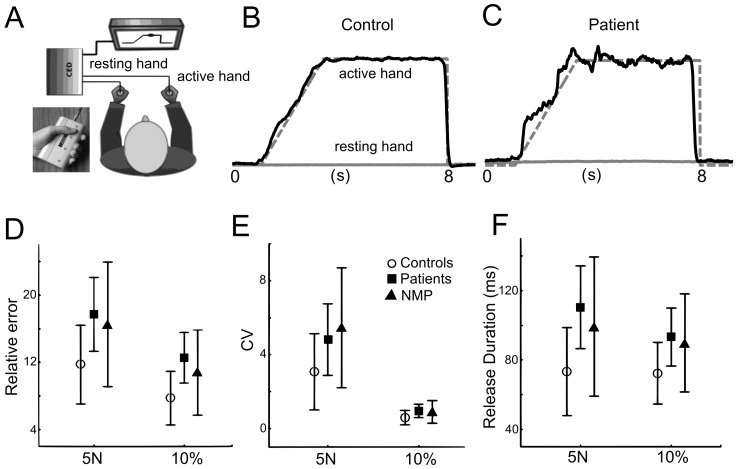Figure 1. Task and behavioral results.
Visuomotor grip force tracking. A. Setup for visual grip force tracking. The subject holds a grip force manipulandum in each hand and performs the task with the tracking hand, while holding the other manipulandum with the resting hand. Inset: Power grip manipulandum (www.sensix.com). B. Single-trial grip force-tracking example for a control subject at the 5N level. C. Corresponding example for a medicated patient. Gray stippled line: target force trajectory; black solid line: actual grip force of the tracking hand. Gray continuous line: force of the resting hand. Note larger deviation from the target in the patient compared to the control subject. D. Relative error (mean ±SD over the ramp and hold period) for the three groups: control subjects, medicated patients, and non-medicated patients (NMP). E. CV of force (mean ±SD over the ramp and hold period) for the three groups. Note that relative error and CV were higher for the low force condition (5N) since both measures are relative to target force level (c.f.28). F. Release duration (mean ±SD) for the three groups. Significant differences were found between controls and both groups of patients (see Results) in all three variables. No difference was found in force tracking variables between medicated and non-medicated patients.

